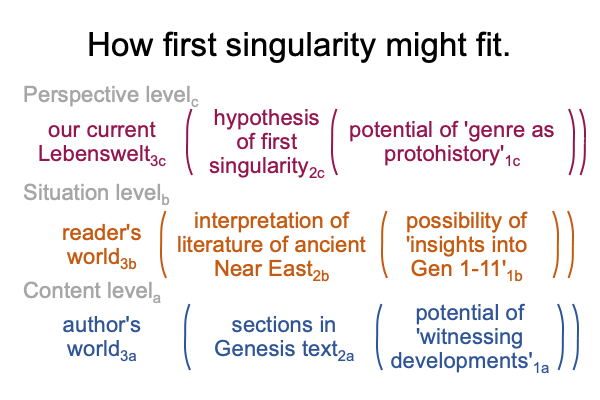Looking at Mark S. Smith’s Book (2019) “The Genesis of Good and Evil” (Part 16 of 16)
0096 Does the name of the tree of the knowledge of good and evil say it all?
On one hand, since the time of Adam, knowledge continually increases, along with labor and social specializations. Civilizations gain wealth and power.
On the other hand, since the time of Adam, evil designs the thoughts in our hearts, because its desire is for our desire. These designs cohere to the traditional notion of original sin. Civilizations corrupt from within.
0097 In Mark S. Smith’s book, the text ends in the middle of the bound volume. Then, the endnotes begin. This is the work of a scholar. It does not step out of the closed loop of retrieval.
0098 Yet, this is precisely what happens in the fictional account of the first singularity, An Archaeology of the Fall (available at smashwords and other e-book vendors). The first singularity is a scientific hypothesis, addressing the question, “Why is our current Lebenswelt not the same as the Lebenswelt that we evolved in?”
0099 When retrieving an author, both insights and conditions are valuable. If indeed, the conditions are as proposed in this blog, then the insights allow a re-articulation of the concept of the Fall, and perhaps, of original sin.
There is more to Genesis 3 than meets the eye.
0100 My thanks to Mark S. Smith for his well-documented work.

